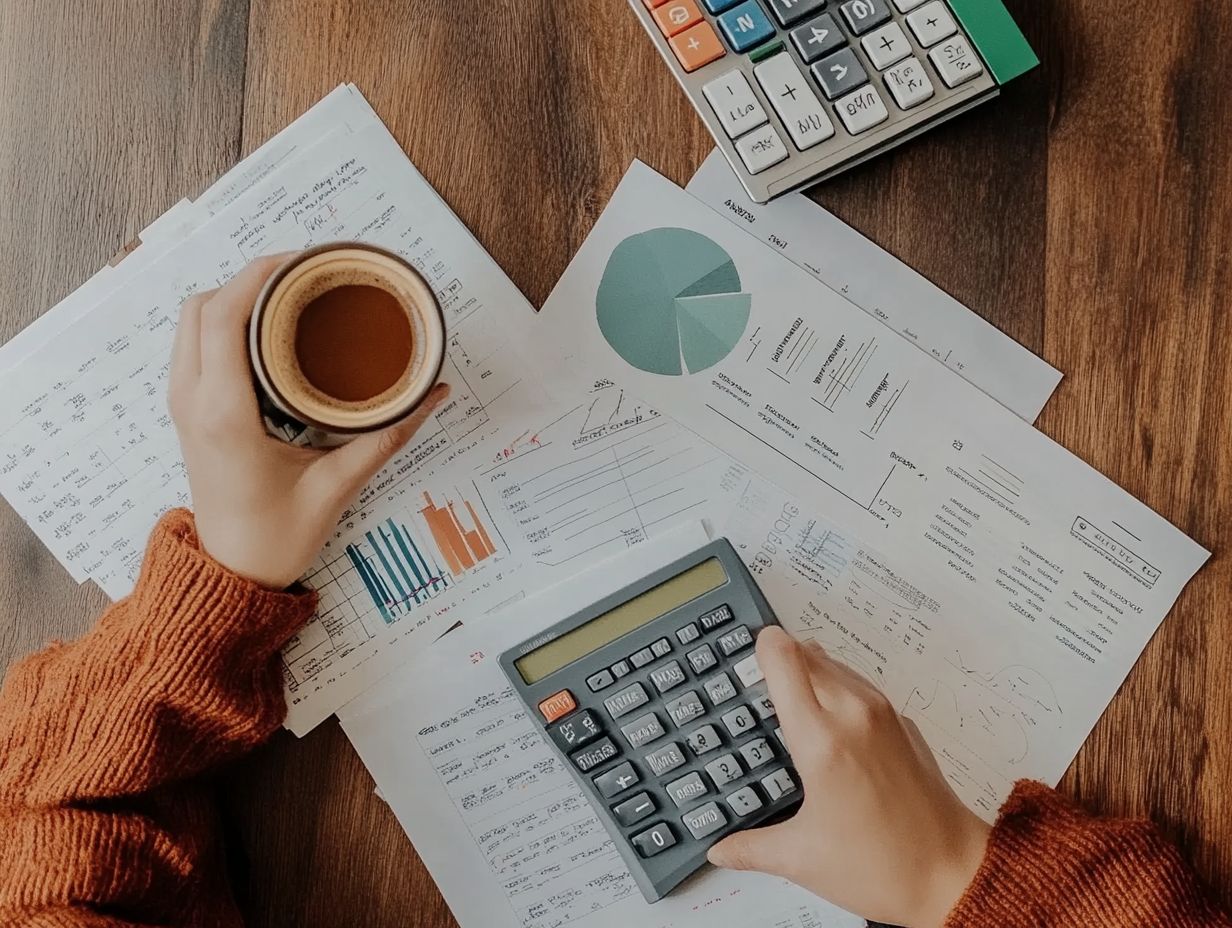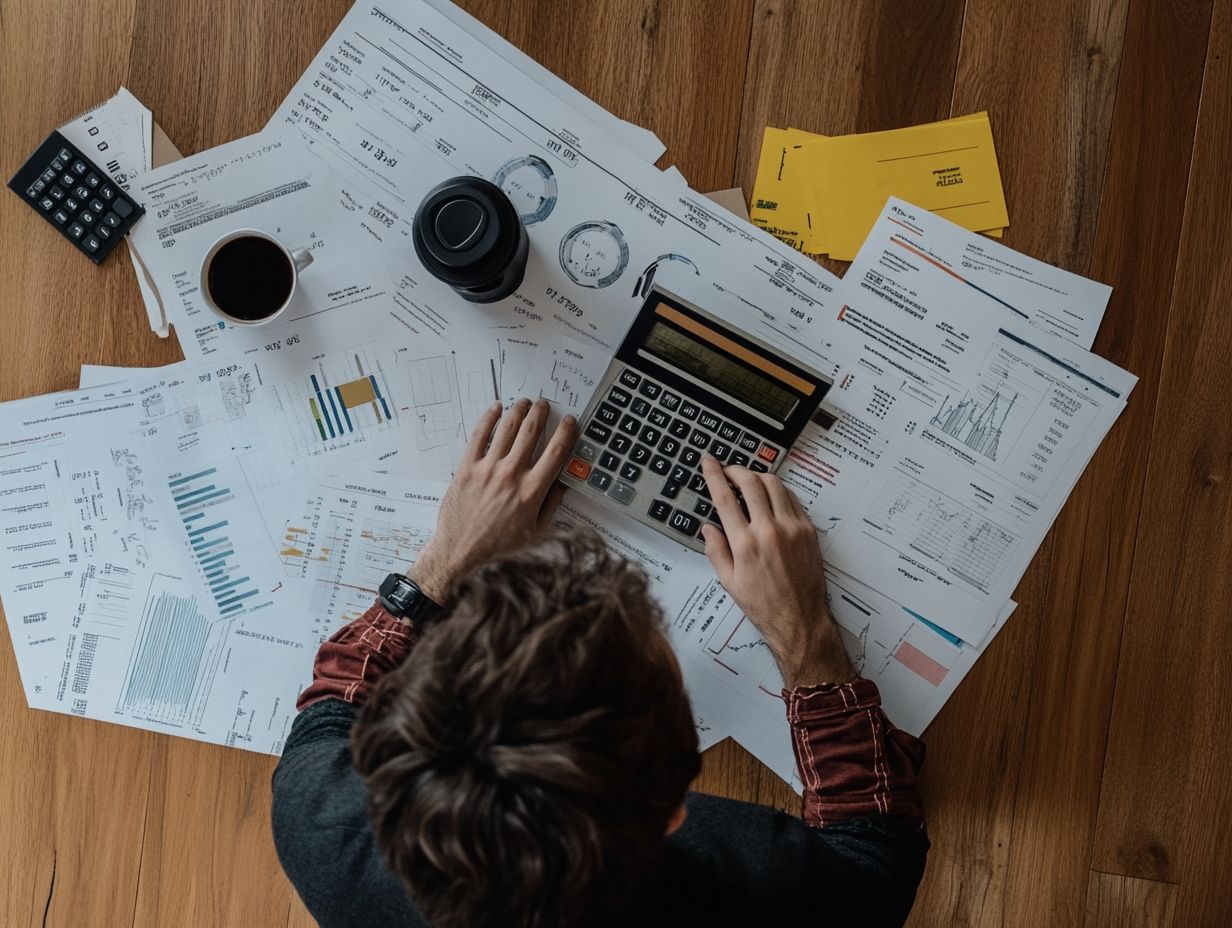What are Contingency Funds?
Contingency funds are an essential component of your financial planning, serving as a safety net for those unexpected expenses that life throws your way.
This article delves into what contingency funds are, highlighting their benefits and the potential risks you face by not having one.
You ll explore practical strategies for building your fund, figuring out how much to save, and discover tips for effective management.
By grasping and applying these concepts, you will be better prepared to navigate life’s surprises and fortify your financial future.
Contents
Key Takeaways:

- Contingency funds are essential emergency savings used to cover unexpected expenses or loss of income.
- Having a contingency fund provides financial security and can prevent potential consequences such as debt or financial stress.
- When building a contingency fund, it’s important to have a solid strategy and follow best practices, considering factors such as income, expenses, and risk tolerance.
Understanding Contingency Funds
Contingency funds are essential for ensuring your financial stability, whether you re managing personal finances or running an organization. They act as a savings fund, ready to tackle unexpected expenses and urgent costs that may arise from various scenarios, such as economic downturns, natural disasters, or public health emergencies.
By establishing a well-structured reserve fund, you give yourself the power to navigate crises confidently and maintain operational strength during turbulent times, ultimately enhancing your overall financial resilience.
Definition and Purpose
A contingency fund is your financial safety net, specifically designed to cover those unexpected expenses that life throws your way, ensuring you remain stable during times of crisis or uncertainty.
This fund is essential, allowing you to keep things running smoothly without significant disruption. In personal finance, for instance, it gives you the power to families to navigate sudden job losses, medical emergencies, or urgent home repairs without spiraling into debt.
On a larger scale, governments rely on these reserves to manage unexpected shortfalls or economic downturns, ensuring that essential services continue seamlessly.
By proactively setting aside funds for unforeseen circumstances, you can alleviate the anxieties tied to financial insecurity and bolster your resilience against life’s unpredictability.
Why Contingency Funds are Important
Contingency funds are crucial for your financial resilience. They serve as a safety net against unexpected expenses that may arise during tough times.
These funds help you maintain your budget even when facing adversity. With a contingency fund, you can navigate challenges with confidence and stability.
Benefits and Potential Consequences Without One

The benefits of having a contingency fund are extensive. It improves your financial stability, preparing you for both economic and healthcare emergencies.
Without a fund, you may face significant financial stress and the potential to accumulate debt. For instance, unexpected medical bills can arise from an accident or sudden illness.
A well-maintained fund allows you to tackle such challenges head-on. You won’t need to rely on high-interest loans or credit card debt.
During economic downturns, if you lose your job or face reduced hours, your savings will help cover essential expenses. This makes tough transitions much smoother.
Without this safety net, many feel trapped in financial desperation. This often leads to decisions that can harm your credit and future prospects.
Being prepared with a contingency fund protects your lifestyle and provides invaluable peace of mind. It reinforces the importance of avoiding unnecessary debt.
Building a Contingency Fund
Establishing a contingency fund requires careful planning and smart strategies tailored to your unique needs, whether personal or organizational.
By ensuring you have adequate funding sources in place, you ll be well-prepared to navigate unexpected disruptions and emergencies with confidence and ease.
Strategies and Best Practices
Effective strategies for building your contingency fund include:
- Establishing automated savings
- Focusing on cash liquidity having cash available when you need it
By prioritizing these elements, you can create a financial cushion that brings peace of mind. Setting up automatic transfers from your checking account to a dedicated savings account is a great way to contribute consistently without having to think about it.
To maintain liquidity, choose options like high-yield savings accounts or money market accounts. These not only keep your funds safe but also provide quick access when necessary. It’s important to balance having enough cash for emergencies while also protecting your funds from unexpected expenses or potential inflation.
How Much Should You Save in a Contingency Fund?
Determining the ideal amount to save in your contingency fund requires assessing several key factors. Think about your financial commitments, evaluate any liquidity risks, and consider your specific personal or organizational needs.
This comprehensive approach will guide you in effectively allocating reserves for your emergency planning, ensuring you’re prepared for unexpected circumstances.
Factors to Consider

When determining how much to save in a contingency fund, consider:
- Your living expenses
- Potential emergency costs
- The likelihood of economic downturns or healthcare expenses
These elements can significantly impact your financial stability. For instance, if you support a family, you may have substantial monthly living expenses think mortgage or rent, utilities, and groceries meaning you’ll need a more robust savings plan.
Unexpected costs, like car repairs or sudden medical bills, underscore the necessity of having a financial buffer. If you live in an area that experiences economic fluctuations or job instability, aim for a higher savings target to prepare for potential unemployment periods.
Healthcare can be unpredictable, and anticipating these costs ensures you’re never caught off guard, reinforcing the importance of a well-structured contingency fund.
Tips for Managing a Contingency Fund
Effectively managing a contingency fund involves strategies that prioritize maximizing your savings while minimizing risk. This ensures your fund remains a dependable resource during financial challenges and unforeseen disruptions.
Maximizing Savings and Minimizing Risk
To maximize your savings while minimizing risk in a contingency fund, consider:
- Utilizing high-yield savings accounts
- Adopting proactive risk management strategies
This approach not only offers the potential to earn more interest compared to traditional savings accounts but also ensures easy access to funds when unforeseen expenses arise. By combining these accounts with a disciplined savings routine, you can be well-prepared for emergencies without sacrificing liquidity.
Recognizing the importance of financial flexibility can greatly enhance your emergency planning efforts. It equips you to take decisive actions in times of need, ultimately fostering peace of mind and establishing a robust financial foundation.
Frequently Asked Questions
What are Contingency Funds?

Contingency funds are reserved funds set aside for unexpected or emergency situations that may arise in the future.
Discover why a contingency fund is crucial for your financial security!
A contingency fund provides a financial safety net, allowing you to cover unexpected expenses without dipping into your savings or taking on debt.
Start building your contingency fund today! Every little bit counts.
How much should I have in my Contingency Fund?
Experts suggest saving 3 to 6 months’ worth of expenses in your contingency fund. This will help you handle unexpected events or emergencies!
What types of expenses can a Contingency Fund cover?
A contingency fund can cover various expenses. These include medical emergencies, home or car repairs, job loss, and natural disasters.
Can I use my Contingency Fund for non-emergency expenses?
A contingency fund mainly covers emergencies. However, you can use it for non-emergency expenses, like a big purchase or vacation, as long as you refill the fund afterward.
Where should I keep my Contingency Fund?
Keep your contingency fund in a separate savings account. This should be easy to access during emergencies but not for daily spending.






